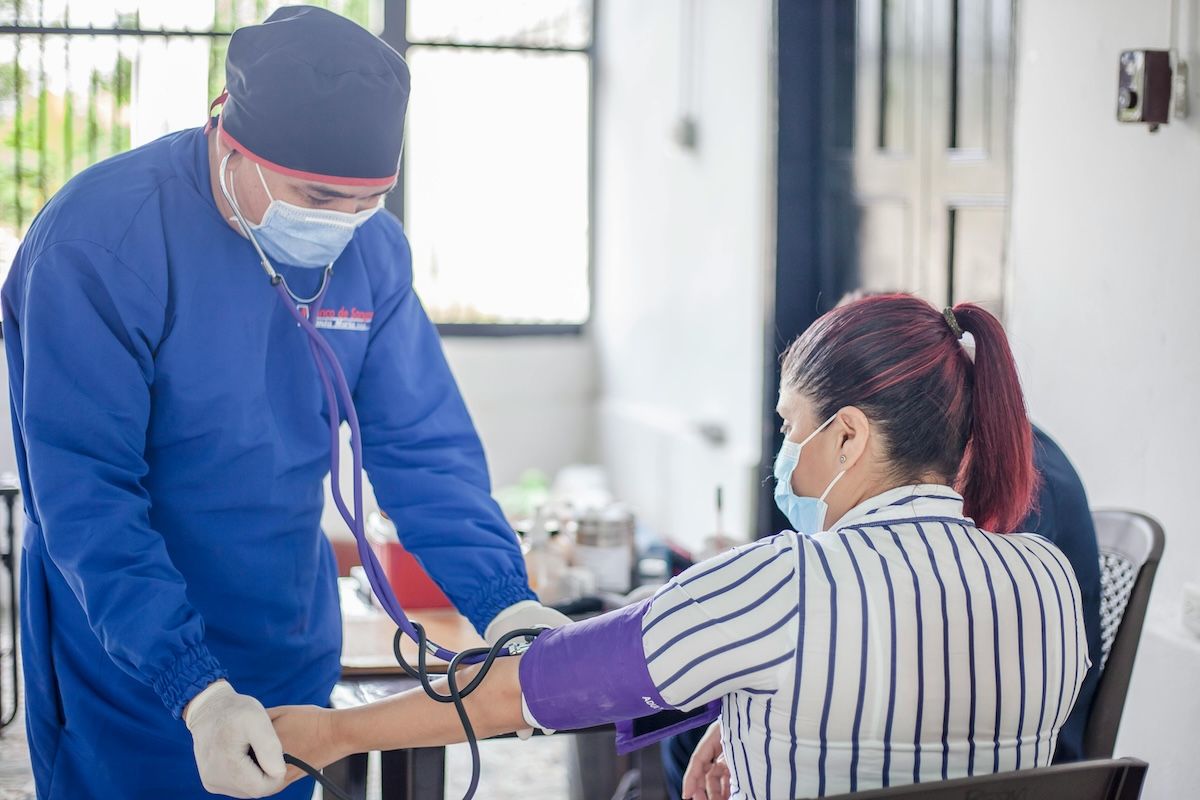Medical Assistant (MA) vs. Certified Nursing Assistant (CNA): Explaining the Difference for 2026
Navigating the world of healthcare careers can be confusing, especially when trying to understand the distinctions between similar roles. Two common positions that often get mixed up are Medical Assistants (MAs) and Certified Nursing Assistants (CNAs). While both play vital roles in patient care, their responsibilities, work environments, and required training differ significantly.
This article will break down the key differences between MAs and CNAs, exploring their distinct job duties, educational paths, career outlooks, and earning potential. This guide will provide a clear understanding of what sets MAs and CNAs apart, helping you determine which path might be the right fit for you.
What You Should Know About the Difference Between MA and CNA
- Medical assistants have a broader scope, encompassing both clinical and administrative tasks. They are involved in patient care but also handle front-office duties. Certified nursing assistants (CNAs) focus primarily on direct patient care and activities of daily living (ADLs). Their work is more hands-on with patients, assisting with hygiene, mobility, and basic needs.
- Medical assisting programs can range from certificates/diplomas to associate degrees. While not always required, certification (like the CMA) is highly recommended. CNA training programs are generally shorter, often a few weeks to a few months. State certification is mandatory to work as a CNA.
- Medical assistants perform a mix of clinical and administrative tasks. CNAs are primarily focused on basic patient care: bathing, dressing, eating, toileting, and mobility assistance. Direct patient interaction is the core focus.
- Generally, MAs have a higher earning potential than CNAs due to their broader skill set and diverse career options. CNAs earn less on average, but experience and location can influence pay. Becoming an LPN/RN is the path to significantly higher earnings.
- Medical assistants have more diverse career paths, including specialization, office management, or further education in healthcare administration. CNAs can specialize, become LPNs/RNs with further schooling, or move into supervisory roles within long-term care facilities.
Table of Contents
- What is a medical assistant?
- What education is required to become a medical assistant for 2026?
- What are the different types of MA certifications available?
- Where do medical assistants typically work?
- What is a certified nursing assistant?
- What education is required to become a certified nursing assistant?
- How long does it take to get CNA certification?
- How Can Continuing Education Boost Career Prospects for MAs and CNAs?
- What types of healthcare facilities hire CNAs?
- What advanced degree options can further elevate my career in healthcare?
- Can short-term certification courses boost my healthcare career?
- Can accredited medical coding programs enhance my healthcare career?
- What is the average salary for MAs and CNAs?
- Can combining healthcare expertise with technology accelerate career growth?
- What are the training costs and financial aid options for healthcare careers?
- What is the job outlook for MAs and CNAs?
- How can emerging digital skills reshape healthcare careers?
- What accreditation and quality indicators should I consider in healthcare training programs?
- Other Things You Should Know About the Difference Between MA and CNA
What is a medical assistant?
A medical assistant (MA) is a healthcare professional who provides both clinical and administrative support in a physician's office, clinic, or other healthcare setting. Their duties are varied and can include taking patient histories and vital signs, preparing patients for examinations, assisting the physician during procedures, and administering injections or medications as directed. In 2023, there were 783,900 MAs in the healthcare workforce.
MAs also handle crucial administrative tasks such as scheduling appointments, managing patient records, processing insurance forms, and handling billing. This blend of clinical and administrative responsibilities makes the MA a vital link between patients and healthcare providers.
Medical assistants work under the supervision of physicians or other healthcare professionals and play a key role in ensuring the smooth and efficient operation of a medical practice. They often serve as the first point of contact for patients, creating a welcoming and comfortable environment. Their diverse skill set and ability to multitask make them valuable members of the healthcare team, contributing to quality patient care and the overall success of the medical facility.
To prepare for this role, many aspiring professionals choose to enroll in medical assistant trade schools, which offer practical training and foundational knowledge needed for the profession.
What education is required to become a medical assistant for 2026?
While there are no strict national or state-level educational requirements to become a medical assistant, here's a breakdown of the typical educational path:
- High School Diploma or GED: This is the foundational requirement. You must have a high school diploma or its equivalent (GED) to enroll in most medical assistant programs.
- Medical Assistant Program: Although not always mandatory, completing a medical assistant program is highly recommended. These programs provide targeted training and hands-on experience in both clinical and administrative skills. Taking affordable online medical assistant programs can lead to a certificate, diploma, or associate degree.
- Certificate/Diploma Programs: These programs focus specifically on medical assisting skills and can be completed in a shorter time frame (typically under a year).
- Associate Degree Programs: These programs offer a broader education, including general education courses in addition to medical assisting coursework. They usually take about two years to complete and may provide a stepping stone for further education.
- Externship or Hands-on Training: Many medical assistant programs include an externship or clinical practicum, which provides valuable real-world experience in a healthcare setting.
- Certification: While not always required by employers, obtaining a certification can significantly enhance your job prospects and demonstrate your commitment to the profession.
What are the different types of MA certifications available?
There are accelerated medical assistant programs that you can take to become certified. Here's a breakdown of the most common and MA certifications:
Certified Medical Assistant (CMA)
- Offered by: American Association of Medical Assistants (AAMA)
- Focus: This is widely considered the gold standard and covers both clinical and administrative skills.
- Eligibility: Requires graduation from a CAAHEP or ABHES-accredited program.
Registered Medical Assistant (RMA)
- Offered by: American Medical Technologists (AMT)
- Focus: Similar to the CMA, it validates competence in a range of MA duties.
- Eligibility: Offers more pathways, including work experience, alongside accredited programs.
National Certified Medical Assistant (NCMA)
- Offered by: National Center for Competency Testing (NCCT)
- Focus: Assesses knowledge in clinical procedures, office management, and patient care.
- Eligibility: Requires completion of an NCCT-approved program or relevant work experience.
Certified Clinical Medical Assistant (CCMA)
- Offered by: National Healthcareer Association (NHA)
- Focus: Emphasizes clinical tasks like assisting with exams, administering medications, and EKGs.
- Eligibility: Requires completion of a training program or relevant work experience.

Where do medical assistants typically work?
Medical assistants are in demand across a variety of healthcare settings. Here are the most common sectors that employ them:
- Physicians' Offices: This is the most common work environment for MAs. They support doctors in private practices, clinics, and group practices, handling both administrative and clinical tasks. In 2023, a total of 430,490 medical assistants worked in offices of physicians.
- Hospitals: MAs work in various hospital departments, including outpatient clinics, emergency rooms, and specialty units. Their duties may vary depending on the department.
- Outpatient Care Centers: These facilities provide medical care for patients who don't require hospitalization. MAs in these centers perform a range of tasks, from taking patient histories to assisting with minor procedures.
- Other Healthcare Facilities: MAs may also find employment in urgent care centers, ambulatory surgical centers, and even some specialized clinics (like those focused on physical therapy or chiropractic care).
The following are some of the emerging roles for a certified medical assistant:
- Telemedicine: With the rise of telehealth, MAs are increasingly involved in virtual consultations, taking vital signs remotely and providing patient education.
- Insurance Companies: MAs with strong administrative skills may find roles in insurance companies, where they review medical records and process claims.
What is a certified nursing assistant?
A Certified Nursing Assistant (CNA) is a vital member of the healthcare team who provides basic care to patients in a variety of settings. They work under the supervision of registered nurses (RNs) or licensed practical nurses (LPNs) and assist with activities of daily living. Certified nursing assistants have typically completed a related online associate degree.
CNAs are often the primary caregivers, spending a significant amount of time with patients and building close relationships with them. Their duties typically include helping patients with bathing, dressing, eating, and toileting, as well as taking vital signs and reporting any changes in a patient's condition to the nursing staff. CNAs play a crucial role in ensuring the comfort and well-being of patients, providing both physical and emotional support.
What education is required to become a certified nursing assistant?
Becoming a certified nursing assistant (CNA) does not require a college degree, but it does involve specific training and certification. Here's the typical path:
- High School Diploma or GED: This is the basic educational requirement. You'll need to have a high school diploma or its equivalent (GED) to enroll in a CNA training program.
- State-Approved CNA Training Program: You must complete a state-approved CNA training, or an associate's program. These programs, considered as one of the best associate degrees, cover essential skills and knowledge.
- Clinical Hours: CNA programs include a clinical component where you'll gain hands-on experience in a healthcare setting under the supervision of a registered nurse.
- Competency Exam: After completing the training program, you'll need to pass a competency exam to become certified. This exam typically includes a written portion and a skills demonstration.
- State Certification: Once you pass the exam, you will be listed on your state's registry of certified nursing assistants. This certification is usually required to work as a CNA.
How long does it take to get CNA certification?
The time it takes to get CNA certification can vary. Most certified nursing assistant training programs take between four and 12 weeks to complete. This includes both classroom instruction and clinical practice hours. As of 2023, there were 1,469,400 nursing assistants and orderlies based on Bureau of Labor Statistics data.
Factors that can affect the timeline:
- State Requirements: Each state sets its own minimum training hours and specific requirements for CNA certification. Some states might require more training hours than others, which can affect the program length.
- Program Format: Some programs are offered in a traditional classroom setting, while others may be available online or in a hybrid format. The format and schedule of the program can influence how long it takes to complete.
- Program Availability: The availability of certified nursing assistant training programs in your area can also be a factor. You may need to wait for a program to start or for a spot to open up.
- Testing and Certification: After completing the training program, you'll need to pass a competency exam and apply for certification through your state's registry. The time it takes to schedule and receive your results can vary.
If you’re looking for further training or a seamless career transition, you may want to explore best CNA to LPN bridge programs online, which are designed to help CNAs advance their careers efficiently.
How Can Continuing Education Boost Career Prospects for MAs and CNAs?
Pursuing advanced training elevates professional skills and broadens career opportunities in healthcare. Specialized programs—ranging from hands-on clinical modules to administrative training—equip professionals with tools needed to navigate evolving industry demands. For instance, acquiring proficiency in digital record management and billing processes through medical billing and coding classes online fosters versatility and competitiveness. Integrating targeted continuing education into one’s career pathway supports progression into supervisory roles and specialized disciplines while aligning with current best practices and regulatory standards.
What types of healthcare facilities hire CNAs?
Certified nursing assistants (CNAs) are in high demand across a range of healthcare facilities. Here are the most common places that hire CNAs:
- Nursing Homes/Skilled Nursing Facilities: These facilities provide 24-hour care for residents who need assistance with daily living activities, and CNAs are essential in this setting. Nursing homes employed around 4588,590 nursing assistants and orderlies in 2023.
- Hospitals: Hospitals hire CNAs to work in various departments, including medical-surgical units, intensive care units, and rehabilitation units. They assist nurses with patient care, taking vital signs, and performing other basic tasks.
- Assisted Living Facilities: These facilities provide housing and support services for seniors who need some help with daily living but don't require the level of care provided in a nursing home. CNAs play a key role in assisting residents with their needs.
- Home Health Agencies: CNAs work in patients' homes, providing personal care and assistance with ADLs. This allows patients to receive care in the comfort of their own homes.
- Hospice Care: CNAs provide compassionate care to patients in the final stages of life, focusing on comfort and dignity.
- Rehabilitation Centers: CNAs assist patients recovering from illness or injury, helping them regain their independence.
- Clinics and Medical Offices: While less common than some other settings, some clinics and medical offices may hire CNAs to assist with basic patient care tasks. This may lead to opportunities where professionals explore broader roles, as outlined in LPN and CNA job comparison.

What advanced degree options can further elevate my career in healthcare?
Healthcare professionals can broaden their opportunities by pursuing advanced academic credentials that focus on leadership, clinical innovation, and policy development. Doctoral programs, for instance, equip candidates with a blend of rigorous theoretical frameworks and practical application, positioning them for strategic roles in healthcare management. Pursuing an online pharmacy doctorate demonstrates one such pathway that offers a comprehensive curriculum and research experience tailored to the evolving demands of the healthcare industry. Additionally, specialized graduate certificates and master’s programs in areas like healthcare administration and informatics offer focused skill development without the commitment of a full doctoral track, enabling professionals to adapt to industry innovations and maintain competitive advantages.
Can short-term certification courses boost my healthcare career?
Short-term certification courses offer a focused alternative for professionals seeking immediate skill enhancement. They equip healthcare workers with practical competencies in specialized areas, such as medical coding and billing, to quickly address evolving industry standards and requirements. These intensive programs provide structured training that can seamlessly complement on-the-job experience, offering a streamlined route for career advancement. For those interested in rapid, targeted upskilling, consider exploring 4-week medical certificate programs online.
Can accredited medical coding programs enhance my healthcare career?
Integrating specialized training in medical billing and coding can diversify clinical expertise and streamline administrative workflows. Leveraging accredited medical coding programs provides professionals with practical skills in managing healthcare reimbursement and compliance, thereby strengthening their overall marketability. This strategic addition not only supports career progression into leadership roles but also creates opportunities in adjacent fields such as healthcare informatics and revenue cycle management.
What is the average salary for MAs and CNAs?
The average medical assistant salary and certified nursing assistant salary varies because it is influenced by a number of factors.
Medical Assistants (MAs)
You can generally expect an average annual salary for MAs to fall somewhere between $35,000 and $50,000.
Factors affecting pay:
- Location: MAs in metropolitan areas or states with a higher cost of living tend to earn more.
- Experience: Entry-level MAs will typically earn less than those with several years of experience.
- Certification: Holding a certification like the CMA can increase earning potential.
- Work Setting: MAs in specialized clinics or outpatient centers may earn more than those in smaller physician's offices.
- Education: Some employers may prefer or offer higher pay to MAs with an associate degree.
Certified Nursing Assistants (CNAs)
The average annual salary for CNAs is generally lower than for MAs, typically ranging from $28,000 to $40,000.
Factors and nursing trends affecting pay:
- Location: Similar to MAs, CNAs in urban areas or states with higher living costs often earn more.
- Experience: More experienced CNAs may have higher earning potential.
- Work Setting: CNAs working in hospitals or specialized care facilities might earn more than those in nursing homes.
- Shift and Overtime: CNAs who work night shifts, weekends, or overtime may earn more due to shift differentials or overtime pay.
Can combining healthcare expertise with technology accelerate career growth?
Healthcare professionals who expand their skill set by integrating technology can unlock new opportunities in clinical operations and administrative management. By pursuing interdisciplinary training, candidates can leverage advanced analytics, automation, and digital communication tools to optimize patient care and operational efficiency. For example, obtaining credentials through programs like accelerated bachelors degree computer science online can provide a competitive edge by facilitating data-driven decision making and innovative problem-solving in healthcare settings.
What are the training costs and financial aid options for healthcare careers?
Evaluating the financial commitment for MA and CNA training is essential for long-term career planning. Costs can include tuition, certification fees, and additional expenses, which vary by institution and program length. Many providers offer scholarships, flexible payment plans, and financial aid to help manage these costs. Prospective students should compare program fees with anticipated career earnings and consider the return on investment when selecting a training pathway. In addition, exploring alternative career options may provide useful cost benchmarks; for instance, reviewing an affordable software engineering degree online can offer insights into how educational investments differ across industries.
What is the job outlook for MAs and CNAs?
The job outlook for both medical assistants and certified nursing assistants is projected to be strong in the coming years. The U.S. Bureau of Labor Statistics (BLS) anticipates continued growth in both professions, with the home health and personal care aide sector projected to add over 800,000 jobs between 2023 and 2033.
As the population ages, the need for both preventative care and assistance with daily living activities will rise, creating more opportunities for MAs and CNAs. Additionally, the increasing prevalence of chronic conditions will contribute to the demand for healthcare professionals in various settings, including physician's offices, hospitals, and long-term care facilities.
For medical assistants, the BLS projects 15% growth through 2023, largely due to the expansion of outpatient care and the shift toward preventative medicine. As more healthcare services are provided in outpatient settings, the role of MAs in supporting physicians and managing patient care will become even more crucial—a point emphasized in what to expect in a medical assistant course.
Similarly, the demand for CNAs is expected to grow as the elderly population increases and requires assistance with daily living activities. The need for CNAs in nursing homes, assisted living facilities, and home healthcare settings will remain strong, providing ample job opportunities for qualified individuals.
Here’s What Graduates Have to Say About Their MA and CNA Programs
Becoming a medical assistant was the best decision I ever made. I get to use my organizational skills to keep the clinic running smoothly, and I also get to connect with patients on a personal level. Seeing their smiles and hearing their appreciation makes all the hard work worthwhile. Plus, the career growth potential is exciting! David
I chose the CNA path because I wanted a hands-on career where I could make a direct impact. Assisting patients with their daily needs and seeing their progress, no matter how small, is incredibly fulfilling. It's a physically demanding job, but the emotional rewards are immeasurable. Jose
As a medical assistant, I love the mix of clinical and administrative work. Every day is different, from taking vitals and assisting with procedures to interacting with patients and managing their records. It's incredibly rewarding to know I'm making a real difference in people's lives while also building my skills in a fast-paced environment. Maria
How can emerging digital skills reshape healthcare careers?
Digital innovation is transforming healthcare by integrating data analytics, artificial intelligence, and informatics into everyday clinical practice. Healthcare professionals who cultivate these digital competencies can drive improvements in patient outcomes and operational efficiency. Developing skills in areas such as predictive analytics and algorithm-based decision making opens new pathways for career growth, positioning individuals at the forefront of evolving healthcare trends. Pursuing advanced education, including opportunities like the best bioinformatics master's programs online, equips professionals with the technical acumen needed to leverage emerging technologies and secure a competitive edge in a digitally driven landscape.
What accreditation and quality indicators should I consider in healthcare training programs?
Evaluating program accreditation and quality is essential for ensuring that MA and CNA training meets current healthcare industry standards. Prospective students should confirm that institutions are accredited by recognized healthcare authorities, as this can directly influence certification eligibility, curriculum rigor, and overall career prospects. Additionally, analyzing tangible outcomes—such as graduation rates, job placement statistics, and alumni feedback—provides insights into the program’s effectiveness. As healthcare increasingly integrates emerging technologies, learners may benefit from programs that also emphasize digital competencies, ensuring a competitive edge in evolving fields like bioinformatics online programs.
Key Findings
- As of 2023, there were 1,469,400 nursing assistants and orderlies, and 783,900 MAs in the healthcare workforce.
- Nursing homes employed around 458,590 nursing assistants and orderlies in 2023.
- For medical assistants, the BLS projects 15% growth through 2023, largely due to the expansion of outpatient care and the shift towards preventative medicine.
- The U.S. Bureau of Labor Statistics (BLS) anticipates continued growth in both professions, with the home health and personal care aide sector projected to add over 800,000 jobs between 2023 and 2033.
- In 2023, a total of 430,490 medical assistants worked in offices of physicians.
Other Things You Should Know About the Difference Between MA and CNA
How do the job duties of an MA differ from those of a CNA?
MAs handle a wider range of tasks, combining clinical duties like taking vitals and assisting with procedures with administrative tasks such as scheduling and managing records. CNAs focus primarily on direct patient care, assisting with daily living activities and providing essential support and comfort, especially in long-term care. Essentially, MAs blend clinical and administrative work, while CNAs concentrate on hands-on patient care.
Are there opportunities for career advancement for CNAs and MAs?
Both CNAs and MAs can advance their careers, though their paths differ. CNAs often specialize, pursue further education to become LPNs or RNs, or move into supervisory roles. MAs can specialize, earn advanced certifications, pursue degrees in healthcare administration, or transition into management or teaching positions.
Which career path (MA or CNA) offers better long-term earning potential?
MAs generally have higher long-term earning potential than CNAs due to their broader skill set, encompassing both clinical and administrative duties. MAs also have more diverse specialization and advancement opportunities, including management roles and further education. While CNAs are vital and in demand, their earning potential is more limited, with significant salary increases typically requiring a transition to LPN or RN, a separate career path. Ultimately, the best choice depends on individual interests and career goals, though MAs often offer greater financial growth potential.
How do I decide if I should become an MA or a CNA?
Choosing between MA and CNA careers depends on your interests, skills, and goals. If you prefer hands-on care and long-term patient interaction, a CNA role might be a good fit, while MAs often enjoy a mix of clinical and administrative tasks in a fast-paced clinic environment. Consider your preferred work setting (nursing home vs. physician's office), desired education commitment, and long-term career growth aspirations when making your decision. Both roles require compassion, strong communication, and physical stamina, but offer distinct career paths within healthcare.
References:
- American Association of Medical Assistants. (2024). 2024 CMA/RMA Compensation and Benefits Report.
- Bureau of Labor Statistics. (2023). Medical assistants. Occupational Outlook Handbook.
- Bureau of Labor Statistics. (2023). Occupational Employment and Wage Statistics, May 2023: Nursing assistants.
- Bureau of Labor Statistics (2023). Nursing assistants and orderlies.
- Statista. (2024). Top 30 occupations in the U.S. with the largest projected increase in job openings.


































